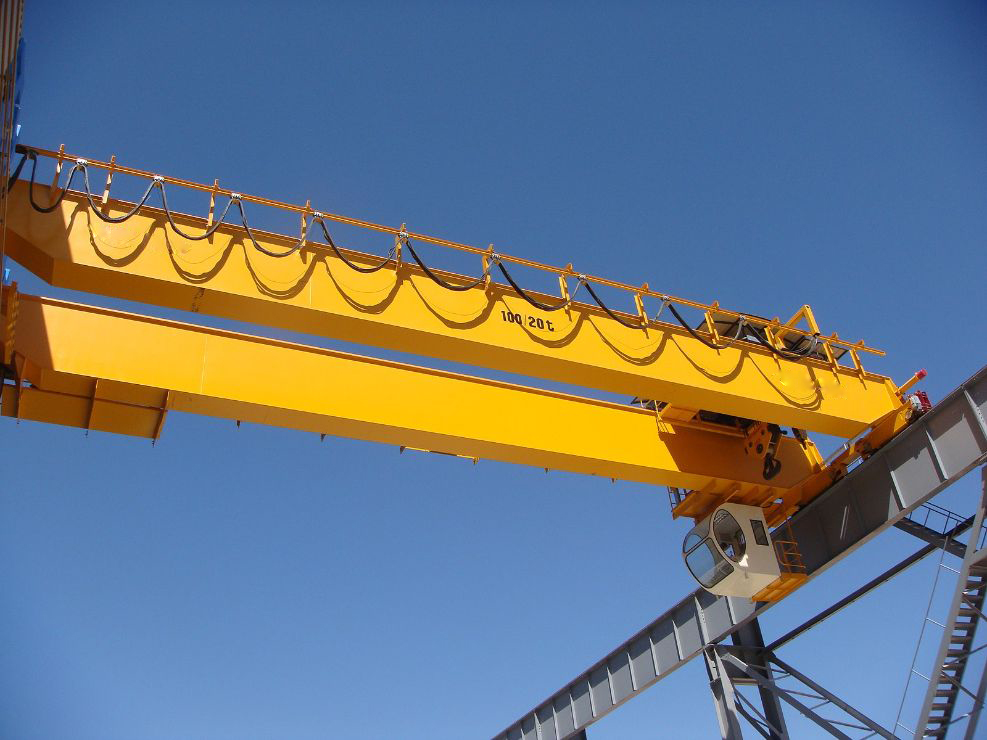What is the useful life of overhead cranes?
Overhead cranes are an essential tool in many industries, providing a safe and efficient method for lifting and moving heavy materials. However, like any piece of equipment, overhead cranes have a limited useful life. In this article, we will explore what factors can affect the useful life of overhead cranes and how to prolong their lifespan.
The useful life of an overhead crane can vary depending on several factors, including the frequency of use, maintenance, and the conditions in which it operates. Typically, overhead cranes can last up to 30 years with proper maintenance and care.
One of the most critical factors in maintaining an overhead crane's lifespan is regular maintenance. A preventive maintenance program is crucial to identifying potential problems before they cause significant damage or downtime. It is recommended to inspect critical components, such as brakes, cables, and hooks, at least once per year, or according to the manufacturer's recommendations. Depending on the usage and application, some parts may require more frequent inspections.
In addition to regular maintenance, it is crucial to operate the crane safely and within its operating limits. Overloading or misusing the crane can cause significant damage, and it may affect the crane's useful life. It is essential to train operators correctly, and they should understand the crane's capabilities and limitations.
The operating environment can also affect the crane's useful life. If the crane is exposed to harsh weather conditions, corrosive substances, or high dusty or humid environments, it may suffer from premature wear and tear. It is essential to keep the crane clean, lubricated, and well-maintained to prolong its lifespan.
Finally, when the crane approaches its useful life, it may be time to consider a replacement. Older cranes may not meet industry safety standards, and their maintenance costs may outweigh the benefits of keeping them operational.
In conclusion, the useful life of overhead cranes depends on many factors, including maintenance, usage, and operating conditions. By implementing a regular maintenance program, providing proper training, and understanding the crane's limitations, the crane's lifespan can be extended. When considering a crane's replacement, safety, and the cost of maintenance should be evaluated to identify the ideal time for replacement.

The useful life of an overhead crane can vary depending on several factors, including the frequency of use, maintenance, and the conditions in which it operates. Typically, overhead cranes can last up to 30 years with proper maintenance and care.
One of the most critical factors in maintaining an overhead crane's lifespan is regular maintenance. A preventive maintenance program is crucial to identifying potential problems before they cause significant damage or downtime. It is recommended to inspect critical components, such as brakes, cables, and hooks, at least once per year, or according to the manufacturer's recommendations. Depending on the usage and application, some parts may require more frequent inspections.
In addition to regular maintenance, it is crucial to operate the crane safely and within its operating limits. Overloading or misusing the crane can cause significant damage, and it may affect the crane's useful life. It is essential to train operators correctly, and they should understand the crane's capabilities and limitations.
The operating environment can also affect the crane's useful life. If the crane is exposed to harsh weather conditions, corrosive substances, or high dusty or humid environments, it may suffer from premature wear and tear. It is essential to keep the crane clean, lubricated, and well-maintained to prolong its lifespan.
Finally, when the crane approaches its useful life, it may be time to consider a replacement. Older cranes may not meet industry safety standards, and their maintenance costs may outweigh the benefits of keeping them operational.
In conclusion, the useful life of overhead cranes depends on many factors, including maintenance, usage, and operating conditions. By implementing a regular maintenance program, providing proper training, and understanding the crane's limitations, the crane's lifespan can be extended. When considering a crane's replacement, safety, and the cost of maintenance should be evaluated to identify the ideal time for replacement.

related article
> Precautions for using cranes
> Different Types of Cranes Used in Ports
> How does a launching gantry work?
> European Double Girder Overhead Crane
> Philippine customer orders two rail battery electric transfer cart
> What are overhead and gantry cranes?
> From a custom-made winchmachinery for a Saudi customer
> The Congolese customer ordered three electric transfer cart and they have been completed.






.jpg)




.jpg)
.jpg)



